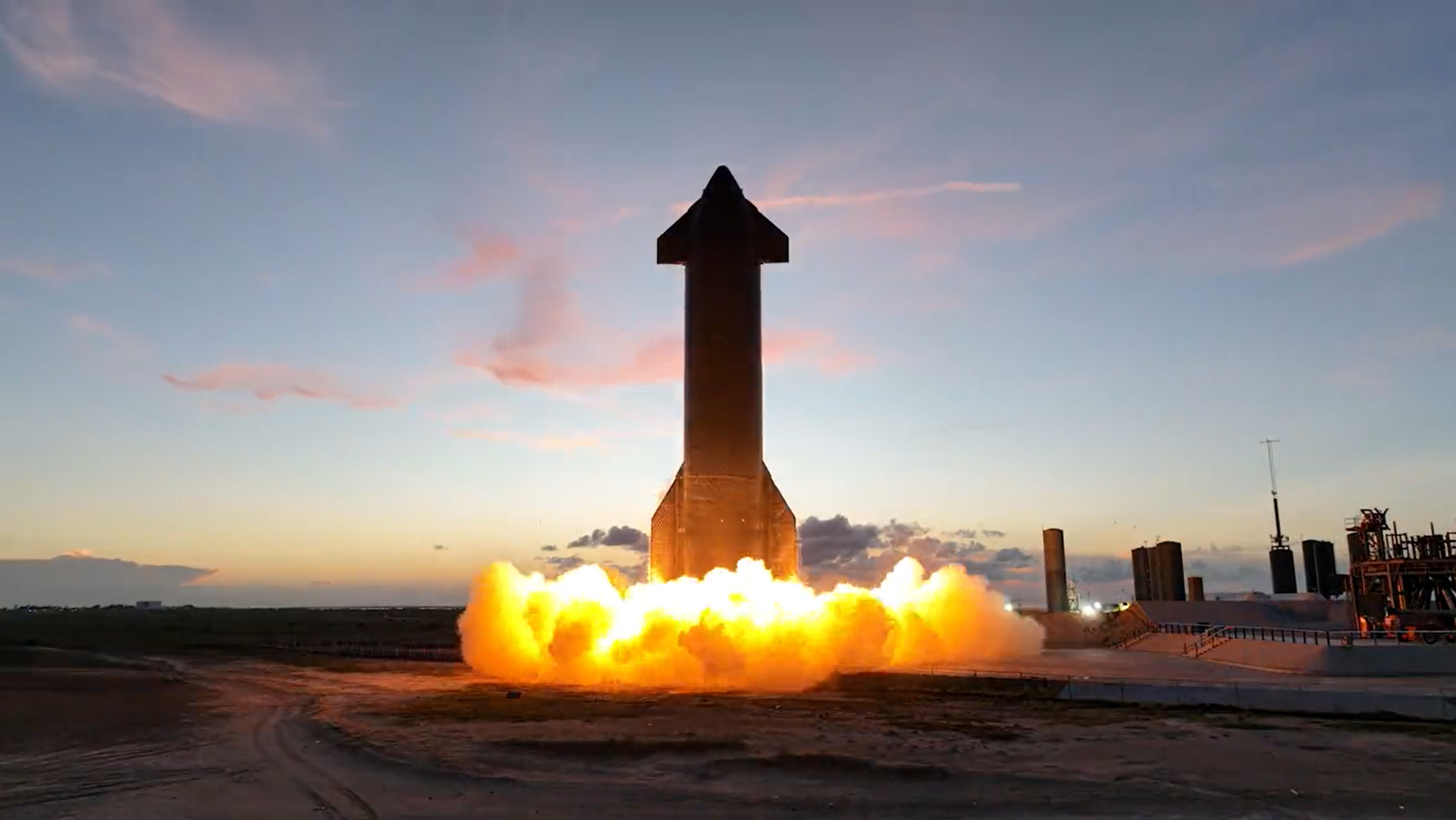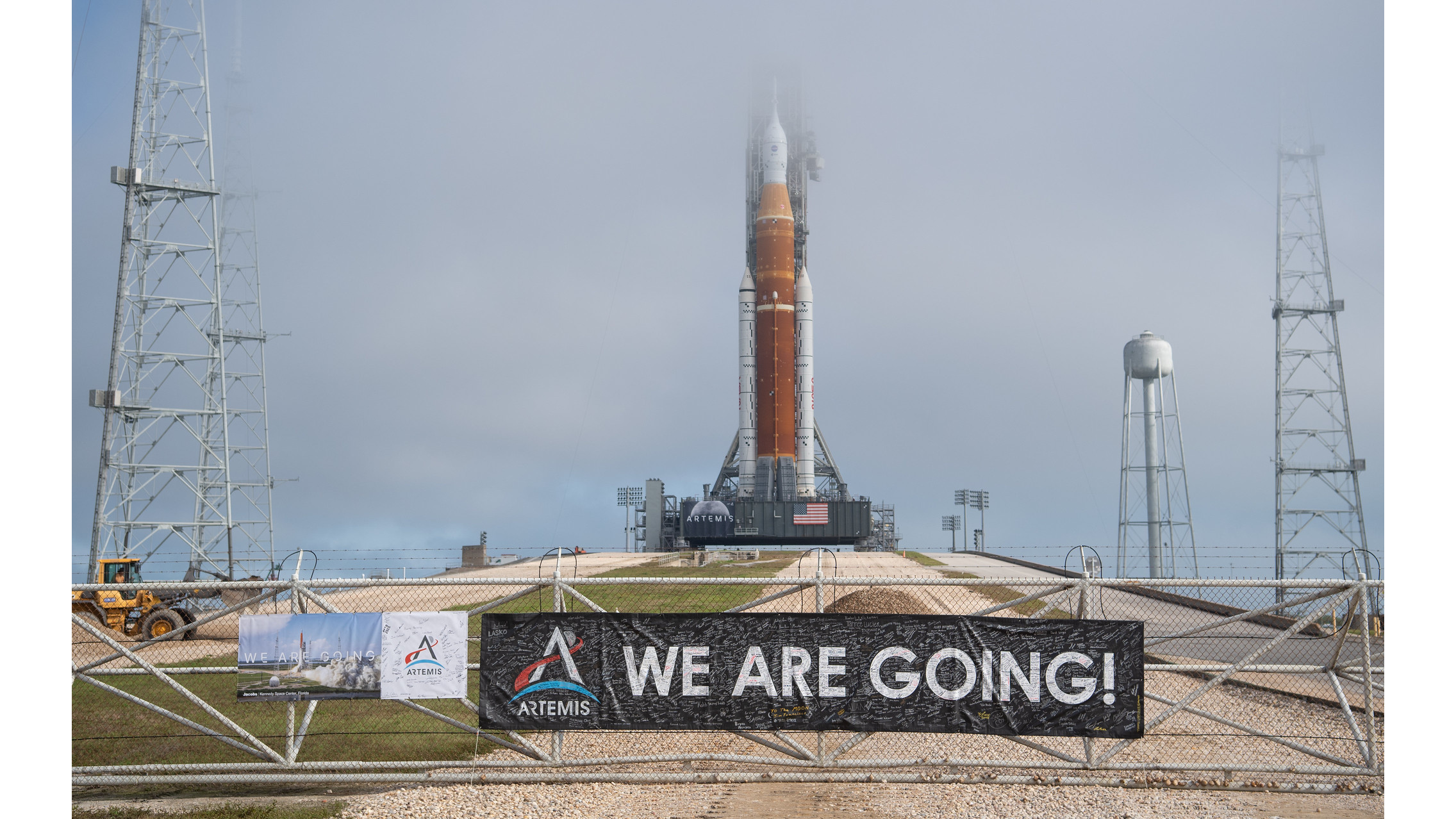SpaceX's giant Starship rocket to launch Japanese satellite in 2024

Another customer has signed up to use SpaceX's giant Starship rocket.
Sky Perfect JSat has chosen Starship to launch its Superbird-9 communications satellite to geosynchronous transfer orbit in 2024, the Japanese company announced Thursday (Aug. 18). Terms of the deal were not disclosed.
Starship is SpaceX's next-generation transportation system, which the company believes will make Mars colonization and other ambitious exploration feats economically feasible. The vehicle consists of a huge first-stage booster called Super Heavy and a 165-foot-tall (50 meters) upper-stage spacecraft known as Starship.
Photos: SpaceX lifts huge Super Heavy rocket onto launch stand
Both of these elements are designed to be fully and rapidly reusable — hence the envisioned affordability — and both will be powered by SpaceX's Raptor engine. Starship will sport six Raptors and Super Heavy will have a whopping 33 of them. (For perspective: SpaceX's workhorse Falcon 9 rocket features 10 of the company's Merlin engines, nine in the first stage and one in the second.)
Starship doesn't have any spaceflights under its belt yet, but SpaceX is working to change that. The company is gearing up for the first orbital test mission of a Starship vehicle, which could lift off from SpaceX's South Texas facility in the next few months.
Sky Perfect JSat joins a handful of other customers who aren't scared off by Starship's novelty. For example, Japanese billionaire Yusaku Maezawa has booked a Starship ride around the moon for himself and a handful of other passengers, and NASA picked Starship to be the first crewed lunar lander for its Artemis program of moon exploration.
Breaking space news, the latest updates on rocket launches, skywatching events and more!
Maezawa's moon trip is tentatively targeted for 2023. NASA's first use of Starship to put astronauts on the moon will come with the Artemis 3 mission, which the agency aims to launch in 2025 or 2026.
Superbird-9, meanwhile, is a flexible high-throughput satellite that "will deliver broadcast and broadband missions in Ku band primarily over Japan and Eastern Asia, in response to mobility and broadband demands," Sky Perfect JSat representatives said in a statement Thursday.
Mike Wall is the author of "Out There" (Grand Central Publishing, 2018; illustrated by Karl Tate), a book about the search for alien life. Follow him on Twitter @michaeldwall. Follow us on Twitter @Spacedotcom or on Facebook.

Michael Wall is a Senior Space Writer with Space.com and joined the team in 2010. He primarily covers exoplanets, spaceflight and military space, but has been known to dabble in the space art beat. His book about the search for alien life, "Out There," was published on Nov. 13, 2018. Before becoming a science writer, Michael worked as a herpetologist and wildlife biologist. He has a Ph.D. in evolutionary biology from the University of Sydney, Australia, a bachelor's degree from the University of Arizona, and a graduate certificate in science writing from the University of California, Santa Cruz. To find out what his latest project is, you can follow Michael on Twitter.
